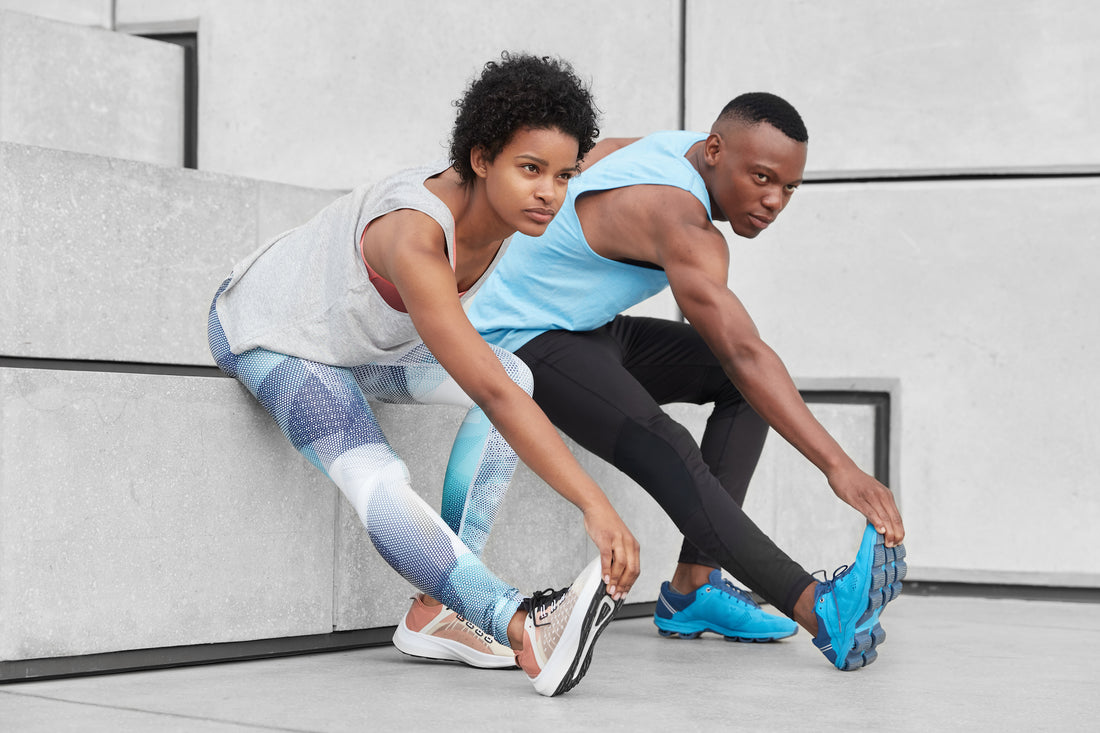Most athletes and active people don't have a problem getting motivated to exercise and work out regularly. But when it comes to recovery, that is when things get a bit tricky. Maybe they have a rest day, at least once a week, or book a massage. There is nothing wrong or discouraged with these coping mechanisms, but post-workout stretches can help speed up the recovery process. We strongly recommend having good stretches that the athlete can do after intense training, workout, or competition. Stretching is immensely important; it nourishes and conditions muscles that are used repeatedly. It's also effective in combating risks of future injuries. These are the five stretches we think are best for recovery.
Cobra Stretch
The cobra stretch is adopted from yoga; it's among the best stretches to do if you are in recovery. It mainly targets the hip flexors, abdominals, top of the feet, biceps, and brachialis muscles. The person stretching can also feel the stretch up into the chest and along the front of their torso. The cobra stretch is also known for its ability to help with better spine flexibility. It lengthens the spine, which in turn relaxes it and eliminates some forms of back pain.
It helps in reducing muscle stiffness and soreness, which are the two main goals of recovery. Immediately after the cobra stretch is released, the blood flow in the body will increase. When coming into the cobra stretch, they should lengthen their neck and lower back. This helps in protecting vulnerable areas from overstretching during the pose. It also helps the backbend further, lifting into spinal extension. As a personal trainer, you should try to master the stretch to pass down the right techniques and skills for recovery.
Runner's Lunge with a Side Stretch
The runner's Lunge is a very beneficial and common stretch, especially for runners. It stretches a lot of muscle groups in the leg, including glutes, quads, and obliques. Even non-runners can benefit from the stretch, especially after workout sessions. The pose can also be used as a warm-up before a run. When you add the side stretch, it makes it better for the one recovering.
Once they assume a lunge position, ensure they bring the opposite arm over their head while they slowly lean into the stretch. Repeat the same stretching motions on the opposite side to ensure every muscle is equally stretched. Hold the runner's Lunge stretch for thirty to sixty seconds before switching legs. Breathing should stay consistent all through the stretching. If you want the client to achieve an even deeper stretch, advice the athlete or the client you are helping to drop their knee to the ground.
Knee-To-Chest Stretch
This stretch relaxes glutes, thighs, and hip muscles while promoting overall relaxation. It's a simple stretch that can help speed up recovery. At Designs for Sports, we recognize the connection between health and performance. That is why recovery is crucial, and you should ensure your trainees are in good shape every time. Breathing deeply during these stretches will help release any tension. Hold the knee-to-chest stretch for a minute or less. Ensure you repeat the same motion on the other leg.
Since the client will be lying flat on the ground for this pose, you can add a cushion under the head to provide extra padding. Sometimes they may struggle with the arms when reaching the leg while drawing the knee into the chest. You can help by wrapping a towel around the leg to ensure the stretch is done perfectly. They should lift the head up towards the knee and tuck the chin into the chest to deepen the stretch.
Downward Dog
The downward dog stretch is also borrowed from yoga. It quickly made its way into the stretch world, especially for athletes, because of the many benefits. It stretches many muscles and relieves tension. It's among the best back stretches because it takes a lot of tension from the shoulders and the lower back. You use your lower back for many things, walking, running, and even getting out of bed each day. So it's crucial to have a lower back stretch as part of the recovery routine.
Regular stretching will help build strength and create and keep flexibility. The trainee would be in a much better shape if they recovered well from the last exercising session. Ensure your client executes the pose correctly and focuses on their inhale and exhale to ease the tension built up in the body. They will stretch their whole body when they are facing down on all fours. It also helps in fine-tuning the foot muscles.
Iron Cross Stretch
This stretch is especially great for a runner or anyone who might experience hip stiffness. It stretches the sides of the hips and lengthens the spine. If you want a full-middle body stretch, this should be your go-to pose. Guide your client through it and ensure they spread their arms out while they shuffle from side to side with the lower body. This move will also help build muscles and protect their spine.
They also have to engage the glutes, which helps in building essential hip strength. This is a popular stretch in the weight room and sometimes the gymnastic floor. You should try to incorporate it in your post-workout recovery for your clients. There are several progressions and variations of the stretch depending on the fitness level and the targets.
Conclusion
You should try to include all these five stretches in your recovery plan. It helps your clients feel better after intense workouts or training sessions. They all target different muscles, so you need to know when to execute them. We feel that recovery should be as important as the training itself. That is why we have given you these amazing recovery stretches.
5 Best Stretches for Your Client's to Improve Recovery




